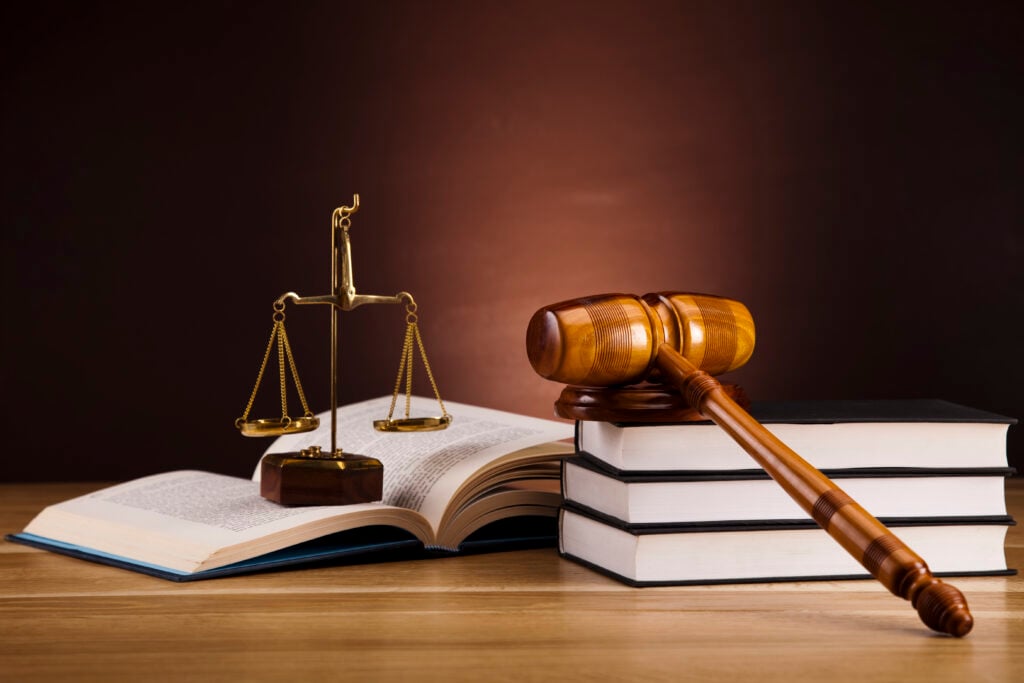In brief
When would the directors of a company be bound to consider the interest of the company’s creditors? This was the issue at the heart of the Singapore Court of Appeal’s (SGCA) watershed decision in Foo Kian Beng v OP3 International Pte Ltd (in liquidation) [2024] SGCA 10, which comes hot on the heels of the UK Supreme Court’s pronouncements on the same issue in BTI 2014 LLC v Sequana SA and others [2022] UKSC 25.
In a unanimous decision of a panel comprising five judges, the SGCA held that the existence and scope of a director’s duty to have regard to the interests of creditors (i.e., “Creditor Duty“) would shift dynamically with reference to the financial state of the company objectively assessed at the time of the alleged breach of duty. The closer the company is to insolvency proceedings, the greater the scrutiny on the actions of the directors and the operation of the Creditor Duty to prohibit directors from authorising transactions that have the exclusive effect of benefiting shareholders (or themselves) at the expense of the company’s creditors.
Key takeaways
- A director’s duty to act in the best interests of the company means that he must consider the interests of the different stakeholders of the company, including creditors, at all times. Hence, even where a company is solvent, a director who acts in complete disregard of creditor interests may still be liable for failing to act in the best interests of the company.
- The rationale behind the Creditor Duty is the shift in the identity of the main stakeholder of the company from shareholders to creditors as the company approaches insolvency, and the asymmetry in corporate governance where creditors have no control over the company’s conduct even in such situations.
- The content of the director’s duty to act in the best interests of the company can be split into three categories depending on the financial state of the company:
- Category one: Where the company is solvent, the Creditor Duty is not engaged and a director typically need not do anything more than act in the best interests of the shareholders. However, the director must not defraud creditors.
- Category two: Where the company will imminently be unable to pay its debts, the court will scrutinise the director’s actions with reference to the potential benefits and risks that the relevant transaction might bring to the company.
- Category three: Where corporate insolvency proceedings against the company are inevitable, the Creditor Duty applies in full measure and the director cannot authorise transactions that have the exclusive effect of benefiting shareholders or themselves at the expense of the creditors.
- In determining the financial state of the company, contingent liabilities must be considered. A director cannot extract resources from a company in litigation where this would benefit the director and/or shareholders at the expense of creditors.
Background
The respondent, OP3 International Pte Ltd (“OP3“) was an interior design, decorating consultancy and construction services business. The appellant, Mr Foo Kian Beng (“Mr Foo“), was at all material times the sole director and shareholder of OP3.
In July 2013, OP3 contracted with Smile Inc Dental Surgeons Pte Ltd (“Smile Inc“) to provide fitting out works at one of Smile Inc’s clinics (“Clinic“). The works were completed more than a month late. Subsequently, the Clinic experienced two flooding incidents (in January 2014 and in July 2014) which Smile Inc claimed was due to defects in the fitting out works carried out by OP3.
In May 2015, Smile Inc commenced legal proceedings against OP3 in the Singapore High Court (SGHC) alleging that OP3’s failure to exercise reasonable care, skill, and diligence in designing and executing the fitting out works had caused it to suffer damages in the sum of SGD 1,807,626 (“Suit 498“). In October 2017, the SGHC found that OP3 was liable to Smile Inc and in November 2019, the SGHC assessed OP3’s liability at SGD 534,189.19 (“Judgment Debt“).
Between 2015 and 2017, whilst Suit 498 was ongoing, Mr Foo caused OP3 to pay him dividends and repay him loans that he had earlier extended to the company in the total amount of SGD 3,620,746 (“Payments“).
In April 2020, OP3 was ordered to be liquidated following its failure to satisfy the Judgment Debt.
The proceedings below
On 10 February 2021, OP3’s liquidator commenced an action in OP3’s name against Mr Foo in the SGHC to recover sums equivalent to the Payments from Mr Foo on the principal basis that Mr Foo had breached his director’s duty to act in the best interests of the company in authorising the Payments to himself.
OP3 argued that:
1. A director is under a duty to consider the interests of the creditors as part of his duty to act in the best interests of the company at a time when the company is “financially parlous”, and not only when the company is on “the verge of insolvency”.
2. OP3 was insolvent or at least in a financially parlous position at the time Mr Foo authorised the Payments. This was because Suit 498 gave rise to a contingent liability on OP3 in the sum of at least SGD 534,189 (the quantum of damages ultimately awarded to Smile Inc by the SGHC), which was reasonably likely to materialise.
3. In the circumstances, Mr Foo was obliged to consider the interests of creditors as part of his duty as a director to act in the best interests of the company, and he breached that duty by authorising the Payments.
In response, Mr Foo argued that:
1. Mr Foo did not need to account for OP3’s contingent liability in Suit 498 as it was not reasonably likely to materialise at the material time. This is because he genuinely believed that OP3 had a strong defence to Smile Inc’s claim in Suit 498.
2. Mr Foo was under no duty to consider the interests of creditors when he authorised the Payments to himself because part of the Payments had been double counted, and that OP3 was solvent at the material time without this error.
3. Alternatively, Mr Foo submitted that even if he were obliged to consider the interests of creditors in authorising the Payments, he had complied with this duty by obtaining the necessary professional advice and by retaining substantial amounts of money in OP3 before making the Payments.
4. In the further alternative, Mr Foo should be absolved of liability under s 391 of the Companies Act 1967 ( CA) as he had acted honestly and reasonably.
The SGHC allowed OP3’s claim on the basis of the following findings:
1. The Creditor Duty is first engaged when a company is “financially parlous”, and not only when the company is on “the verge of insolvency”. However, it would be more instructive to engage in a broad and practical assessment of the company’s financial health to determine whether the Creditor Duty had arisen and the extent to which a director was obliged to consider the interests of creditors.
2. OP3’s contingent liability in Suit 498 was reasonably likely to materialise.
3. Even accounting for the contingent liability, OP3 was not insolvent or in a financially parlous state at December 2015 or Jul y 2016. There was nothing objectionable about the Payments which were made on or before July 2016 as the Creditor Duty had not been engaged at these times.
4. Accounting for the contingent liability, OP3 was balance sheet insolvent as at December 2016 and December 2017. The Payments made at those times amounting to SGD 1,182,394 (“Disputed Transactions”) breached the Creditor Duty as they singularly benefited Mr Foo at the expense of OP3’s creditors.
Dissatisfied with the SGHC’s decision, Mr Foo appealed to the SGCA.
Decision of the SGCA
The SGCA dismissed the appeal, finding that the Creditor Duty was engaged at the time that Mr Foo authorised the Disputed Transactions and that Mr Foo had breached the Creditor Duty by authorising the Disputed Transactions.
Legal principles on the Creditor Duty
At the outset, the SGCA made some preliminary observations which are key to understanding the nature and scope of the Creditor Duty:
1. First, the interests of creditors do not only become relevant when the Creditor Duty is engaged. A director’s duty is to act in the best interests of the company – this means that the director must consider the interests of the different stakeholders of the company, including creditors, at all times. When a company is solvent and able to pay off its creditors, directors would be justified in treating the interests of shareholders as a proxy for the interests of the company, and correspondingly accord less or even no discrete weight to the interests of creditors. In this scenario, the interests of shareholders and the interests of creditors are aligned – it is in the shareholders’ interests to pay the company’s debts as they fall due to maintain the company’s business, reputation, and access to future credit. That said, a director who acts in complete disregard of creditor interests or acts in a way that is directly adverse to those interests may still be liable for failing to act in the best interests of the company.
2. Second, the underlying rationale for the Creditor Duty is the shift in who may be said to be the main economic stakeholder of the company as the company approaches insolvency, and the asymmetry in corporate governance. While shareholders are the primary bearers of the risk of loss arising from the acts of the directors when the company is solvent, creditors displace them from this position when the company is insolvent because an insolvent company effectively trades and conducts its business with its creditors’ money. As creditors generally have no control over the conduct of the company’s business, there is a need to constrain directors from externalising the risks of continued trading onto creditors, given that shareholders have nothing to lose and everything to gain (and creditors have everything to lose and nothing to gain) by the continued trading o f a company which is on the cusp of insolvency.
The SGCA then set out the two-stage test for analysing claims that a director had acted in breach of the Creditor Duty:
1. First, the court must objectively ascertain the financial state of the company that was prevailing at the time of the transaction sought to be impugned was entered into or that was likely to arise as a result of the company entering into the transaction. As this enquiry is done to determine whether the director had breached the Creditor Duty, the focus is not whether the company was technically insolvent but should involve a broad assessment of all the surrounding circumstances including all claims, debts, liabilities and obligations of the company. There are three financial stages, namely:
- Category one: The company is solvent and able to discharge its debts, having considered all the relevant circumstances including the impugned transaction.
- Category two: The company is imminently likely to be unable to discharge its debts
- Category three: The company will inevitably face corporate insolvency proceedings.
2. Second, having ascertained the financial state of the company, the court should then examine the subjective intentions of the director and determine whether he acted in what he considered to be the best interests of the company. The financial state of the company is the yardstick against which the subjective bona fides of the director may be tested, in particular:
- Category one: Where the company is solvent, a director typically need not do anything more than act in the best interests of the shareholders. The Creditor Duty does not arise as a discrete consideration, but acts taken to defraud creditors will still amount to a breach of duty.
- Category two: In this intermediate zone, the court will scrutinise the director’s actions with reference to the potential benefits and risks that the relevant transaction might bring to the company. If a director considers in good faith that he can take action which will promote the continued viability of the company, and that there is a way out of the company’s financial difficulties which will benefit shareholders and creditors, he is not obliged to treat creditors’ interests as the exclusive or primary determinant. However, transactions which exclusively benefit shareholders or directors (such as the payment of dividends and the repayment of shareholders’ loans) will attract heightened scrutiny.
- Category three: Where corporate insolvency proceedings are inevitable, the creditors are the main economic stakeholders of the company and the Creditor Duty operates to prohibit directors from authorising transactions that have the exclusive effect of benefiting shareholders or themselves (such as the payment of dividends and the repayment of shareholders’ loans) at the expense of the creditors.
Finally, the SGCA also observed that if the court finds that a director had acted in breach of the Creditor Duty, it should consider whether to relieve him of liability under s 391 of the CA, which operates where the director has acted honestly and reasonably, and it is fair for the court to excuse him for his default. This may be relevant in rare cases where directors have misjudged the financial state of the company and failed to adequately consider creditor interests in good faith.
Application to the facts
Applying these principles to the facts, the SGCA agreed with the SGHC that OP3’s contingent liability in Suit 498 was reasonably likely to materialise and had to be taken into account in assessing OP3’s solvency, but found that the quantum of this contingent liability should be approximately SGD 1,470,000 instead of the discounted sum of approximately SGD 500,000 accepted by the SGHC.
Bearing in mind this contingent liability and OP3’s other financial markers demonstrating a steep decline in business, the SG CA concluded that OP3 was in a “rapidly deteriorating operating environment” and that the Creditor Duty was engaged at the time Mr Foo authorised the Disputed Transactions to himself. Accordingly, as the Disputed Transactions singularly enriched Mr Foo at the expense of OP3’s creditors, the SGCA held that Mr Foo had breached the Creditor Duty by authorising the payment of the Disputed Transactions to himself.
Finally, the SGCA held that Mr Foo was not entitled to relief under s 391 of the CA as he had not acted honestly or reasonably. Instead, Mr Foo had enriched himself at the expense of OP3’s creditors despite knowing that there was some merit to Suit 498 and at a time where OP3’s business was on a steep decline.
Conclusion
The question of when (and the extent to which) directors of a company must consider the interests of creditors has traditionally been a vexed one, particularly where the financial state of the company is not necessarily clear-cut. The SGCA’s decision is therefore a welcome one that continues to build on the corporate governance regime in Singapore, and will be a landmark judgment in Singapore (and beyond) on the issue of directors’ duties. In eschewing technicalities in favour of a practical framework that requires directors to have regard to the economic situation of the company, and the relative positions of the company’s shareholders and creditors thereunder, the SGCA has provided clear and succinct guidance to directors faced with authorising decisions – particularly in circumstances where the company is faced with significant contingent liabilities or where its financial circumstances are less than favourable. The specific context of the SGCA’s decision also makes clear that a director may be held personally liable for extracting assets from a company facing litigation where such extraction has the effect of enriching the directors and/or shareholders at the expense of creditors.





